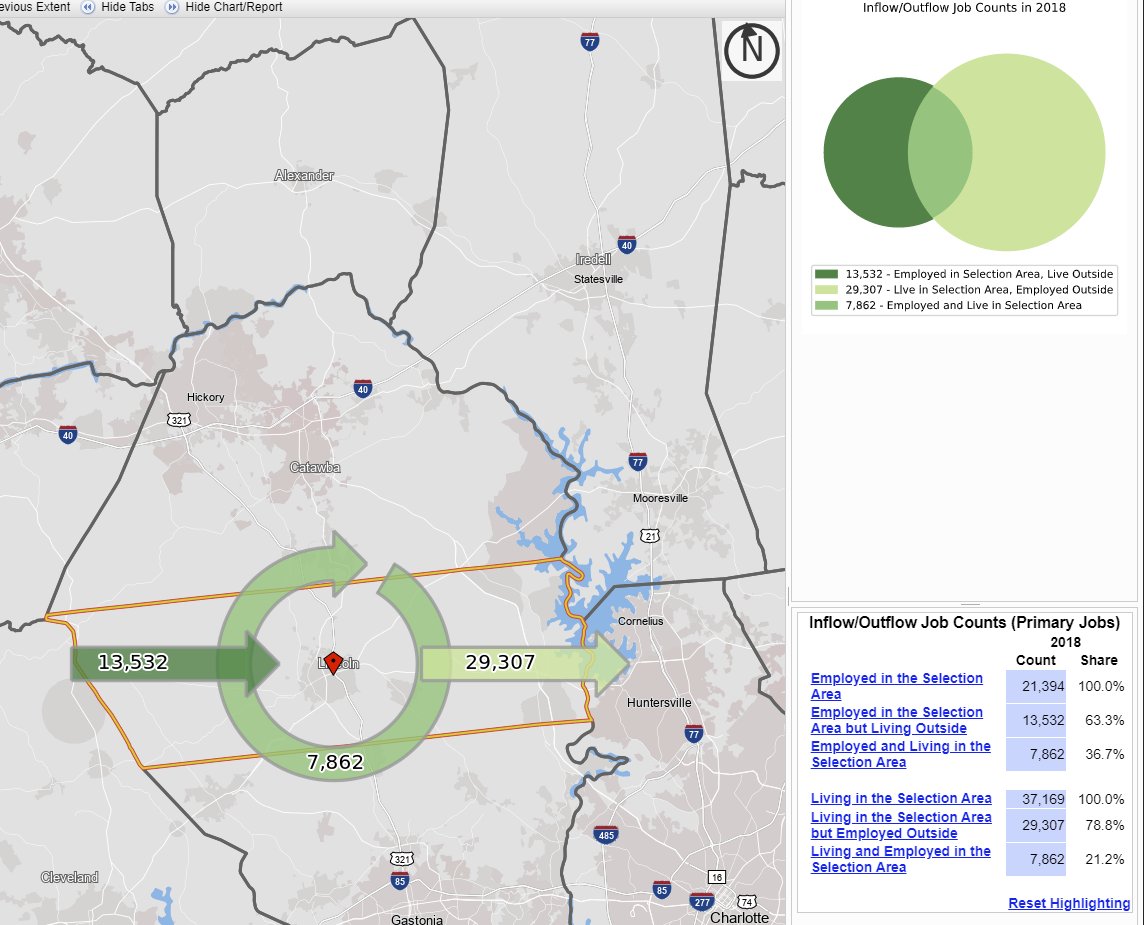
Hello! This is a thread 🧵 on how to determine how many people live in one county but work in a different county. (For example, if people live in Durham County but work in Wake County...)
The best tool to answer this is the OnTheMap application by the @uscensusbureau
onthemap.ces.census.gov
This uses data from the LEHD Origin-Destination Employment Statistics and is current through 2018.
onthemap.ces.census.gov
This uses data from the LEHD Origin-Destination Employment Statistics and is current through 2018.
@uscensusbureau This tool provides detailed information on place of work and place of residence and commuting patterns between the two.
You can drill down on counties by searching for a specific county in the geography search. Let’s use Lincoln County, NC as an example.
You can drill down on counties by searching for a specific county in the geography search. Let’s use Lincoln County, NC as an example.
@uscensusbureau To understand general commuting patterns, you want to use the Inflow/Outflow analysis. (Note: select Primary Jobs to limit to the jobs at which individuals earned the most money) 

@uscensusbureau This gives us the following information: 

13,532 individuals work in Lincoln County but don’t live there (63.3% of jobs in Lincoln County are filled by individuals who live outside of Lincoln County)
29,307 individuals live in Lincoln County but don’t work there (78.8% of Lincoln County residents work outside of Lincoln County)
7,862 individuals live in Lincoln County and work there (36.7% of Lincoln County jobs are filled by Lincoln County residents; 21.2% of Lincoln County residents work in Lincoln County)
To understand where individuals who live in Lincoln County are working, you want to change the analysis to be a “Destination” analysis. 

Select “Home” to look at where people who live in Lincoln County work
Select “work” to look at where people who work in Lincoln County live
You can change “destination” to a variety of geography types, including census tracts, cities, etc. We are looking here at counties.
Select “work” to look at where people who work in Lincoln County live
You can change “destination” to a variety of geography types, including census tracts, cities, etc. We are looking here at counties.
The following analysis is which county Lincoln County residents work in – the main county is Mecklenberg (31.6%), followed by Lincoln (21.2%), Catawba (12.2%), Gaston (9.8%), and Iredell (3.3%). 

Note: Wake County has 3.3% of Lincoln County workers; this could be individuals commuting or teleworking. Or, it could be some influence of individuals working for state agencies.
The underlying data is based on unemployment insurance filings and the address of the individual and the address of their employer. Occasionally, employers with multiple locations have the main office address listed on this form.
All done! Please let us know if you use this tutorial and what else you'd like to learn!
We often get questions from people about commuting patterns in and out of counties!
demography@unc.edu
We often get questions from people about commuting patterns in and out of counties!
demography@unc.edu
• • •
Missing some Tweet in this thread? You can try to
force a refresh



